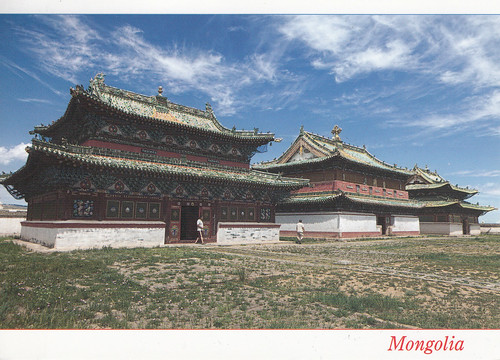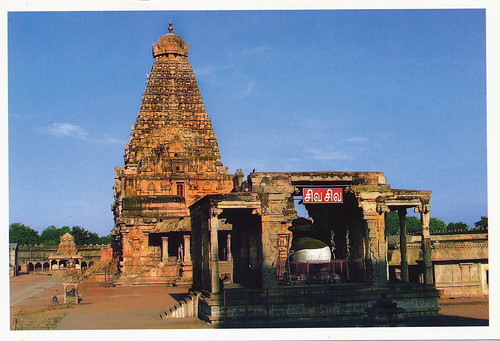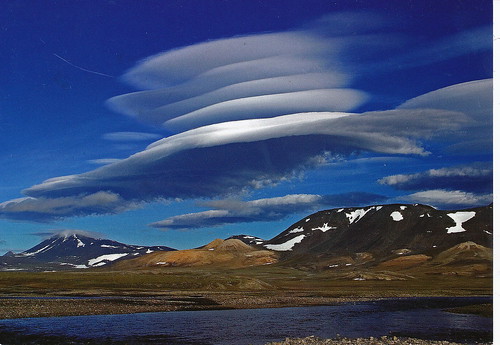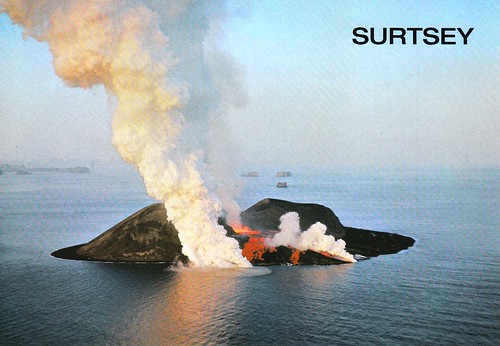Set in the dense forests of the Kii Mountains overlooking the Pacific Ocean, three sacred sites – Yoshino and Omine, Kumano Sanzan, Koyasan – linked by pilgrimage routes to the ancient capital cities of Nara and Kyoto, reflect the fusion of Shinto, rooted in the ancient tradition of nature worship in Japan, and Buddhism, which was introduced from China and the Korean Peninsula. The sites (495.3 ha) and their surrounding forest landscape reflect a persistent and extraordinarily well-documented tradition of sacred mountains over 1,200 years. The area, with its abundance of streams, rivers and waterfalls, is still part of the living culture of Japan and is much visited for ritual purposes and hiking, with up to 15 million visitors annually. Each of the three sites contains shrines, some of which were founded as early as the 9th century.
Year of Inscription: 2004
further Informations: http://whc.unesco.org/en/list/1142
Showing posts with label 2004. Show all posts
Showing posts with label 2004. Show all posts
06/08/2014
30/06/2014
Mongolia - Orkhon Valley Cultural Landscape
The 121,967-ha Orkhon Valley Cultural Landscape encompasses an extensive area of pastureland on both banks of the Orkhon River and includes numerous archaeological remains dating back to the 6th century. The site also includes Kharkhorum, the 13th- and 14th-century capital of Chingis (Genghis) Khan’s vast Empire. Collectively the remains in the site reflect the symbiotic links between nomadic, pastoral societies and their administrative and religious centres, and the importance of the Orkhon valley in the history of central Asia. The grassland is still grazed by Mongolian nomadic pastoralists
Year of Inscription: 2004
further Informations: http://whc.unesco.org/en/list/1081
Year of Inscription: 2004
further Informations: http://whc.unesco.org/en/list/1081
19/07/2013
Serbia - Medieval Monuments in Kosovo
The four edifices of the site reflect the high points of the Byzantine-Romanesque ecclesiastical culture, with its distinct style of wall painting, which developed in the Balkans between the 13th and 17th centuries. The Dečani Monastery was built in the mid-14th century for the Serbian king Stefan Dečanski and is also his mausoleum. The Patriarchate of Peć Monastery is a group of four domed churches featuring series of wall paintings. The 13th-century frescoes of the Church of Holy Apostles are painted in a unique, monumental style. Early 14th-century frescoes in the church of the Holy Virgin of Ljevisa represent the appearance of the new so-called Palaiologian Renaissance style, combining the influences of the eastern Orthodox Byzantine and the Western Romanesque traditions. The style played a decisive role in subsequent Balkan art.
Year of Inscription: 2004
further informations: http://whc.unesco.org/en/list/724
Year of Inscription: 2004
further informations: http://whc.unesco.org/en/list/724
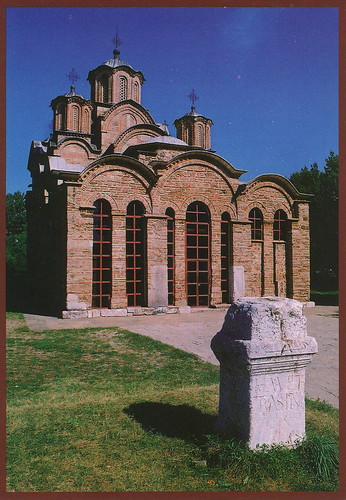 |
South Africa - Cape Floral Region Protected Areas
A serial site – in Cape Province, South Africa – made up of eight protected areas, covering 553,000 ha, the Cape Floral Region is one of the richest areas for plants in the world. It represents less than 0.5% of the area of Africa but is home to nearly 20% of the continent’s flora. The site displays outstanding ecological and biological processes associated with the Fynbos vegetation, which is unique to the Cape Floral Region. The outstanding diversity, density and endemism of the flora are among the highest worldwide. Unique plant reproductive strategies, adaptive to fire, patterns of seed dispersal by insects, as well as patterns of endemism and adaptive radiation found in the flora, are of outstanding value to science.
Date of Inscription: 2004
further Informations: http://whc.unesco.org/en/list/1007
Date of Inscription: 2004
further Informations: http://whc.unesco.org/en/list/1007
 |
17/07/2013
Denmark - Ilulissat Icefjord
Located on the west coast of Greenland, 250 km north of the Arctic Circle, Greenland’s Ilulissat Icefjord (40,240 ha) is the sea mouth of Sermeq Kujalleq, one of the few glaciers through which the Greenland ice cap reaches the sea. Sermeq Kujalleq is one of the fastest (19 m per day) and most active glaciers in the world. It annually calves over 35 km3 of ice, i.e. 10% of the production of all Greenland calf ice and more than any other glacier outside Antarctica. Studied for over 250 years, it has helped to develop our understanding of climate change and icecap glaciology. The combination of a huge ice-sheet and the dramatic sounds of a fast-moving glacial ice-stream calving into a fjord covered by icebergs makes for a dramatic and awe-inspiring natural phenomenon.
Date of Inscription: 2004
further Informations: http://whc.unesco.org/en/list/1149
Date of Inscription: 2004
further Informations: http://whc.unesco.org/en/list/1149
 |
| UnescoTag - Dorthe |
12/07/2013
United Kingdom - Liverpool – Maritime Mercantile City
Six areas in the historic centre and docklands of the maritime mercantile City of Liverpool bear witness to the development of one of the world’s major trading centres in the 18th and 19th centuries. Liverpool played an important role in the growth of the British Empire and became the major port for the mass movement of people, e.g. slaves and emigrants from northern Europe to America. Liverpool was a pioneer in the development of modern dock technology, transport systems and port management. The listed sites feature a great number of significant commercial, civic and public buildings, including St George’s Plateau.
Date of Inscription: 2004
List of Danger: 2012
further Informations: http://whc.unesco.org/en/list/1150
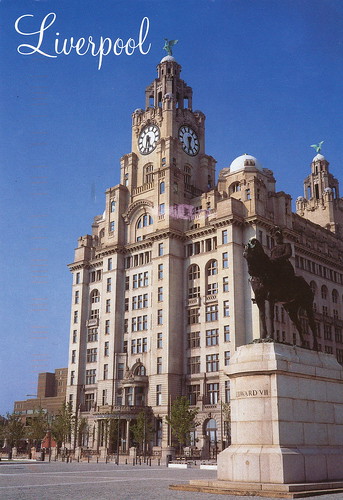 |
| FB-swap with gilly |
10/06/2013
Australia - Royal Exhibition Building and Carlton Gardens
The Royal Exhibition Building and its surrounding Carlton Gardens were designed for the great international exhibitions of 1880 and 1888 in Melbourne. The building and grounds were designed by Joseph Reed. The building is constructed of brick and timber, steel and slate. It combines elements from the Byzantine, Romanesque, Lombardic and Italian Renaissance styles. The property is typical of the international exhibition movement which saw over 50 exhibitions staged between 1851 and 1915 in venues including Paris, New York, Vienna, Calcutta, Kingston (Jamaica) and Santiago (Chile). All shared a common theme and aims: to chart material and moral progress through displays of industry from all nations.
Date of Inscription: 2004
Minor modification inscribed year: 2010
further Informations: http://whc.unesco.org/en/list/1131
Minor modification inscribed year: 2010
further Informations: http://whc.unesco.org/en/list/1131
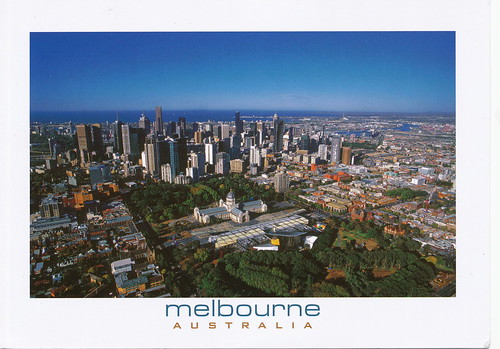 |
| from cathlud |
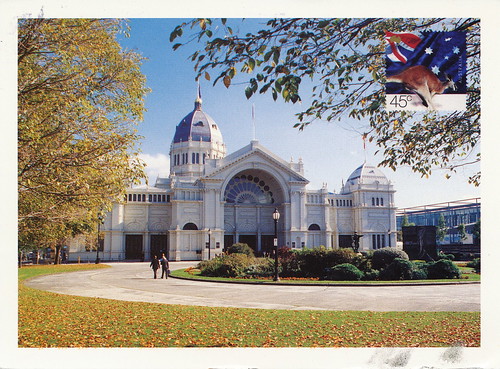 |
| elena_sokolova |
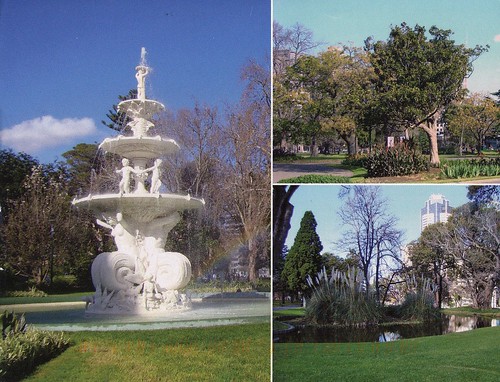 |
| aussiebear |
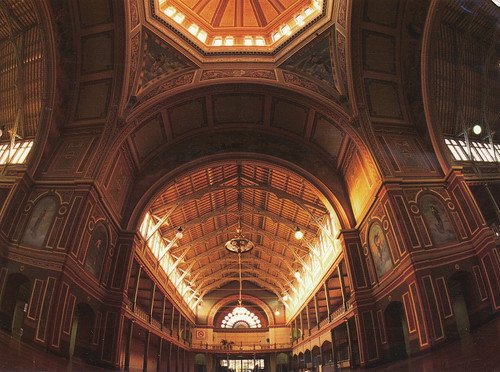 |
| RAS from Heather |
09/12/2011
India - Great Living Chola Temples
Would love to get cards from: The Brihadisvara temple complex, Gangaikondacholapuram, The Airavatesvara temple complex, Darasuram
The Great Living Chola Temples were built by kings of the Chola Empire, which stretched over all of south India and the neighbouring islands. The site includes three great 11th- and 12th-century Temples: the Brihadisvara Temple at Thanjavur, the Brihadisvara Temple at Gangaikondacholisvaram and the Airavatesvara Temple at Darasuram. The Temple of Gangaikondacholisvaram, built by Rajendra I, was completed in 1035. Its 53-m vimana (sanctum tower) has recessed corners and a graceful upward curving movement, contrasting with the straight and severe tower at Thanjavur. The Airavatesvara temple complex, built by Rajaraja II, at Darasuram features a 24-m vimana and a stone image of Shiva. The temples testify to the brilliant achievements of the Chola in architecture, sculpture, painting and bronze casting.
Date of Inscription: 2004
Postcard 1: private swap with sita, received in november 2011
The Great Living Chola Temples were built by kings of the Chola Empire, which stretched over all of south India and the neighbouring islands. The site includes three great 11th- and 12th-century Temples: the Brihadisvara Temple at Thanjavur, the Brihadisvara Temple at Gangaikondacholisvaram and the Airavatesvara Temple at Darasuram. The Temple of Gangaikondacholisvaram, built by Rajendra I, was completed in 1035. Its 53-m vimana (sanctum tower) has recessed corners and a graceful upward curving movement, contrasting with the straight and severe tower at Thanjavur. The Airavatesvara temple complex, built by Rajaraja II, at Darasuram features a 24-m vimana and a stone image of Shiva. The temples testify to the brilliant achievements of the Chola in architecture, sculpture, painting and bronze casting.
Date of Inscription: 2004
Postcard 1: private swap with sita, received in november 2011
08/12/2011
India - Chhatrapati Shivaji Terminus (formerly Victoria Terminus)
The Chhatrapati Shivaji Terminus, formerly known as Victoria Terminus Station, in Mumbai, is an outstanding example of Victorian Gothic Revival architecture in India, blended with themes deriving from Indian traditional architecture. The building, designed by the British architect F. W. Stevens, became the symbol of Bombay as the ‘Gothic City’ and the major international mercantile port of India. The terminal was built over 10 years, starting in 1878, according to a High Victorian Gothic design based on late medieval Italian models. Its remarkable stone dome, turrets, pointed arches and eccentric ground plan are close to traditional Indian palace architecture. It is an outstanding example of the meeting of two cultures, as British architects worked with Indian craftsmen to include Indian architectural tradition and idioms thus forging a new style unique to Bombay.
Date of Inscription: 2004
Postcard 1: private swap with sita, received in november 2011
Date of Inscription: 2004
Postcard 1: private swap with sita, received in november 2011
06/12/2011
Russia - Natural System of Wrangel Island Reserve
Located well above the Arctic Circle, the site includes the mountainous Wrangel Island (7,608 km2), Herald Island (11 km2) and surrounding waters. Wrangel was not glaciated during the Quaternary Ice Age, resulting in exceptionally high levels of biodiversity for this region. The island boasts the world’s largest population of Pacific walrus and the highest density of ancestral polar bear dens. It is a major feeding ground for the grey whale migrating from Mexico and the northernmost nesting ground for 100 migratory bird species, many endangered. Currently, 417 species and subspecies of vascular plants have been identified on the island, double that of any other Arctic tundra territory of comparable size and more than any other Arctic island. Some species are derivative of widespread continental forms, others are the result of recent hybridization, and 23 are endemic.
Date of Inscription: 2004
Postcard 1: private swap with ikkyo
10/11/2011
Russia - Ensemble of the Novodevichy Convent
The Novodevichy Convent, in south-western Moscow, built in the 16th and 17th centuries in the so-called Moscow Baroque style, was part of a chain of monastic ensembles that were integrated into the defence system of the city. The convent was directly associated with the political, cultural and religious history of Russia, and closely linked to the Moscow Kremlin. It was used by women of the Tsar’s family and the aristocracy. Members of the Tsar’s family and entourage were also buried in its cemetery. The convent provides an example of the highest accomplishments of Russian architecture with rich interiors and an important collection of paintings and artefacts.
Date of Inscription: 2004
Postcard 1: City view tag from ptitsa_olga
Postcard 1: City view tag from ptitsa_olga
Postcard 2: autumn tag from kaurry
Postcard 3: Join any topics you want RR #146 - funny duck
08/11/2011
Germany, Poland - Muskauer Park / Park Mużakowski
A landscaped park of 559.9 ha astride the Neisse River and the border between Poland and Germany, it was created by Prince Hermann von Puckler-Muskau from 1815 to 1844. Blending seamlessly with the surrounding farmed landscape, the park pioneered new approaches to landscape design and influenced the development of landscape architecture in Europe and America. Designed as a ‘painting with plants’, it did not seek to evoke classical landscapes, paradise, or some lost perfection, instead using local plants to enhance the inherent qualities of the existing landscape. This integrated landscape extends into the town of Muskau with green passages that formed urban parks framing areas for development. The town thus became a design component in a utopian landscape. The site also features a reconstructed castle, bridges and an arboretum.
Date of Inscription: 2004
further Informations: http://whc.unesco.org/en/list/1127
further Informations: http://whc.unesco.org/en/list/1127
Postcard 1: unesco tag, bodexs
06/11/2011
Lithuania - Kernavé Archaeological Site (Cultural Reserve of Kernavé)
The Kernavė Archaeological site, about 35 km north-west of Vilnius in eastern Lithuania, represents an exceptional testimony to some 10 millennia of human settlements in this region. Situated in the valley of the River Neris, the site is a complex ensemble of archaeological properties, encompassing the town of Kernavė, forts, some unfortified settlements, burial sites and other archaeological, historical and cultural monuments from the late Palaeolithic Period to the Middle Ages. The site of 194,4 ha has preserved the traces of ancient land-use, as well as remains of five impressive hill forts, part of an exceptionally large defence system. Kernavė was an important feudal town in the Middle Ages. The town was destroyed by the Teutonic Order in the late 14th century, however the site remained in use until modern times.
Date of Inscription: 2004
Postcard 1: private swap with lina
Date of Inscription: 2004
Postcard 1: private swap with lina
01/11/2011
Italy - Etruscan Necropolises of Cerveteri and Tarquinia
Would love to receive a card of Tarquinia
These two large Etruscan cemeteries reflect different types of burial practices from the 9th to the 1st century BC, and bear witness to the achievements of Etruscan culture. Wich over nine centuries developed the earliest urban civilization in the nothern Mediterranean. Some of the tombs are monumental, cut in rock and topped by impressive tumuli (burial mounds). Many feature carvings on their walls, others have wall paintings of outstanding quality. The necropolis near Cerveteri, known as Banditaccia, contains thousands of tombs organized in a city-like plan, with streets, small squares and neighbourhoods. The site contains very different types of tombs: trenches cut in rock; tumuli; and some, also carved in rock, in the shape of huts or houses with a wealth of structural details. These provide the only surviving evidence of Etruscan residential architecture. The necropolis of Tarquinia, also known as Monterozzi, contains 6,000 graves cut in the rock. It is famous for its 200 painted tombs, the earliest of which date from the 7th century BC.
Date of Inscription: 2004
Postcard 1: Tomba dei Rilievi in Cerveteri
These two large Etruscan cemeteries reflect different types of burial practices from the 9th to the 1st century BC, and bear witness to the achievements of Etruscan culture. Wich over nine centuries developed the earliest urban civilization in the nothern Mediterranean. Some of the tombs are monumental, cut in rock and topped by impressive tumuli (burial mounds). Many feature carvings on their walls, others have wall paintings of outstanding quality. The necropolis near Cerveteri, known as Banditaccia, contains thousands of tombs organized in a city-like plan, with streets, small squares and neighbourhoods. The site contains very different types of tombs: trenches cut in rock; tumuli; and some, also carved in rock, in the shape of huts or houses with a wealth of structural details. These provide the only surviving evidence of Etruscan residential architecture. The necropolis of Tarquinia, also known as Monterozzi, contains 6,000 graves cut in the rock. It is famous for its 200 painted tombs, the earliest of which date from the 7th century BC.
Date of Inscription: 2004
Postcard 1: Tomba dei Rilievi in Cerveteri
01/10/2011
Iceland - Þingvellir (Thingvellir)
Þingvellir (Thingvellir) is the National Park where the Althing, an open-air assembly representing the whole of Iceland, was established in 930 and continued to meet until 1798. Over two weeks a year, the assembly set laws - seen as a covenant between free men - and settled disputes. The Althing has deep historical and symbolic associations for the people of Iceland. The property includes the Þingvellir National Park and the remains of the Althing itself: fragments of around 50 booths built from turf and stone. Remains from the 10th century are thought to be buried underground. The site also includes remains of agricultural use from the 18th and 19th centuries. The park shows evidence of the way the landscape was husbanded over 1,000 years.
Postcard 1: Received for the JulyRR from Ellaa (Estonia) wo travelled to Iceland this Summer!
- Date of Inscription: 2004
Postcard 1: Received for the JulyRR from Ellaa (Estonia) wo travelled to Iceland this Summer!
Iceland - Surtsey
New Month! October is my favorite one, maybe coz i have Birthday :) or maybe because i love love love the season here in middle europa! foggy mornings, red leaves on the trees and the air is fresh and clean! Let's see what the new month will bring for my mailbox and this blog! Yesterday i received a parcel from another Part of Switzerland. A Part which i've never visited! 50 cards about a hard to get UNESCO site! Yay! Hope i can open the swapping page as soon as possible, but first i have to manage my life and other things.
Surtsey, a volcanic island approximately 32 km from the south coast of Iceland, is a new island formed by volcanic eruptions that took place from 1963 to 1967. It is all the more outstanding for having been protected since its birth, providing the world with a pristine natural laboratory. Free from human interference, Surtsey has been producing unique long-term information on the colonisation process of new land by plant and animal life. Since they began studying the island in 1964, scientists have observed the arrival of seeds carried by ocean currents, the appearance of moulds, bacteria and fungi, followed in 1965 by the first vascular plant, of which there were 10 species by the end of the first decade. By 2004, they numbered 60 together with 75 bryophytes, 71 lichens and 24 fungi. Eighty-nine species of birds have been recorded on Surtsey, 57 of which breed elsewhere in Iceland. The 141 ha island is also home to 335 species of invertebrates.
- Date of Inscription: 2008
28/09/2011
Town Hall and Roland on the Marketplace of Bremen - Germany
Who has a Card with the Town Hall for me?
The Town Hall and the statue of Roland on the marketplace of Bremen in north-west Germany are outstanding representations of civic autonomy and sovereignty, as these developed in the Holy Roman Empire in Europe. The old town hall was built in the Gothic style in the early 15th century, after Bremen joined the Hanseatic League. The building was renovated in the so-called Weser Renaissance style in the early 17th century. A new town hall was built next to the old one in the early 20th century as part of an ensemble that survived bombardment during the Second World War. The statue stands 5.5 m tall and dates back to 1404.
Date of Inscription: 2004
The Town Hall and the statue of Roland on the marketplace of Bremen in north-west Germany are outstanding representations of civic autonomy and sovereignty, as these developed in the Holy Roman Empire in Europe. The old town hall was built in the Gothic style in the early 15th century, after Bremen joined the Hanseatic League. The building was renovated in the so-called Weser Renaissance style in the early 17th century. A new town hall was built next to the old one in the early 20th century as part of an ensemble that survived bombardment during the Second World War. The statue stands 5.5 m tall and dates back to 1404.
Date of Inscription: 2004
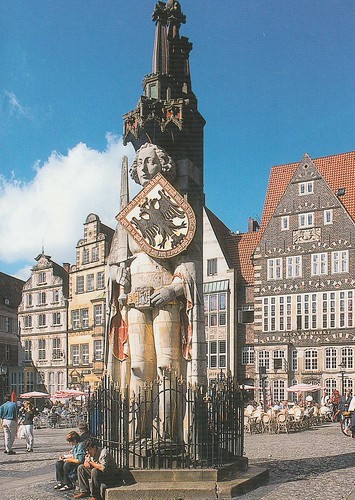 |
| BIG UNESCO #5 from lucyp21 |
 |
| RAS from Astrid |
26/09/2011
Sweden - Varberg Radio Station
The Varberg Radio Station at Grimeton in southern Sweden (built 1922–24) is an exceptionally well-preserved monument to early wireless transatlantic communication. It consists of the transmitter equipment, including the aerial system of six 127-m high steel towers. Although no longer in regular use, the equipment has been maintained in operating condition. The 109.9-ha site comprises buildings housing the original Alexanderson transmitter, including the towers with their antennae, short-wave transmitters with their antennae, and a residential area with staff housing. The architect Carl Åkerblad designed the main buildings in the neoclassical style and the structural engineer Henrik Kreüger was responsible for the antenna towers, the tallest built structures in Sweden at that time. The site is an outstanding example of the development of telecommunications and is the only surviving example of a major transmitting station based on pre-electronic technology.
Date of Inscription: 2004
Date of Inscription: 2004
 |
| Postcard 1: Private Swap with Princess Yulianna |
Subscribe to:
Posts (Atom)

